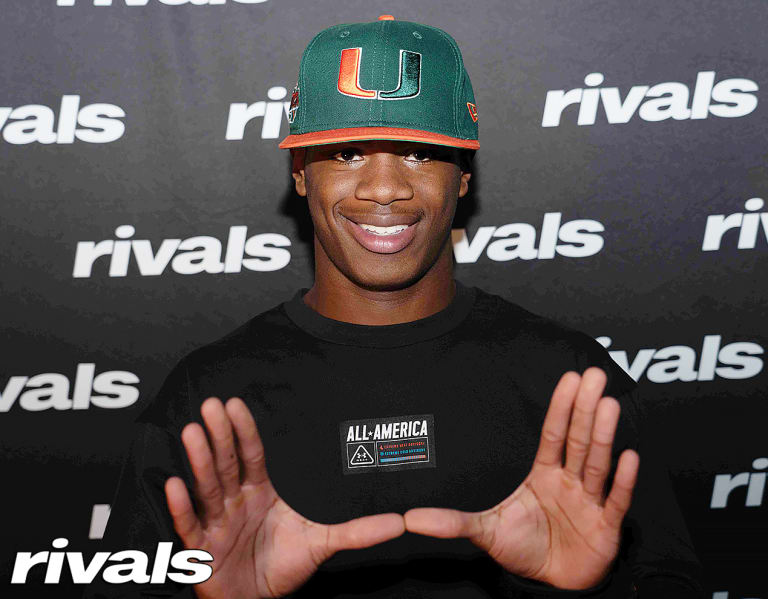ORLANDO – The college football recruiting process has certainly changed over the years, but there are some constants with the best and worst parts of the process itself.
In connecting with Under Armour All-Americans in the class of 2024, most of the worst elements of being a coveted athlete had to do with communication.
Whether it was saying “no thanks” to scores of college coaches at the end of the process in favor of another school or just the volume of coaches trying to stay in contact – it became a hassle for many of the nation’s best.
*****
MORE UA GAME WEEK: Media day interviews | All-Lobby Team | Storylines to follow | DJ Lagway talks Florida | Bussey recruitment still wide open | Cam Coleman on his Auburn flip | Ryan Williams is down to three
*****
The best part of the process varied between prospects.
JacQawn McRoy, a 6-foot-8, 365-pound Oregon offensive line signee, said it was easily the food on official visits that stood out most. North Carolina secondary signee Zion Ferguson said it was the travel experience. Texas running back signee Jerrick Gibson cited the relationship-building with coaches across the sport.
There were less laughs on the other side of the question.
“When I committed, I had to tell all of the coaches I wasn’t coming,” five-star wide receiver and Auburn signee Cam Coleman said.
The No. 5 overall recruit in the class, Coleman flipped to Auburn after the program he was long committed to, Texas A&M, made a coaching change.
Another blue-chip receiver staying in-state is Joshisa Trader. The local Miami signee has been coveted as long as any recruit in the class. It created a broader perspective because of the following he built online and in the south Florida community.
“I like the exposure and the kids looking up to me,” Trader said. “They all look up to me and I try to tell them to not get too caught up in it. You can like it, but don’t get caught up, because you can get lost in it.”
South Carolina wide receiver signee Debron Gatling felt similarly to Trader in getting to this national stage. Others cited the choice itself among the best and worst elements of the process. Only one program can win out, and getting to the finish line creates angst no matter when a commitment is to be made.
Trader said programs negatively recruiting Miami bothered him, but he understood the tactic. Five-star offensive tackle Jordan Seaton dealt with a similar negative approach after picking Colorado over a list of blue-blood programs. It went well beyond the football field.
The elephant in the room Friday, in between good and bad for most, was of course NIL and the ability to make money before or soon after getting to the next level.
Five-star Missouri signee and pass rusher Williams Nwaneri said it came up a lot, but it wasn’t a priority in him selecting the in-state program over Georgia and Oklahoma, among many others.
Another pass rusher, Tennessee signee Jordan Ross, admitted the money pitch became a primary angle for some programs trying to sway him.
NIL adjacent angles were favorable for some of the top talent on hand. Miami linebacker signee Adarius Hayes admitted the decision to flip to Miami over Florida, where he was committed for about 11 months before the change of heart, had to do with his on-field fit as well as a potential branding fit.
“I want to be the next Ray Lewis, but I want to be the first hit-man, that’s my brand,” Hayes said. “The hit-man is coming home…
“Go Canes!”



